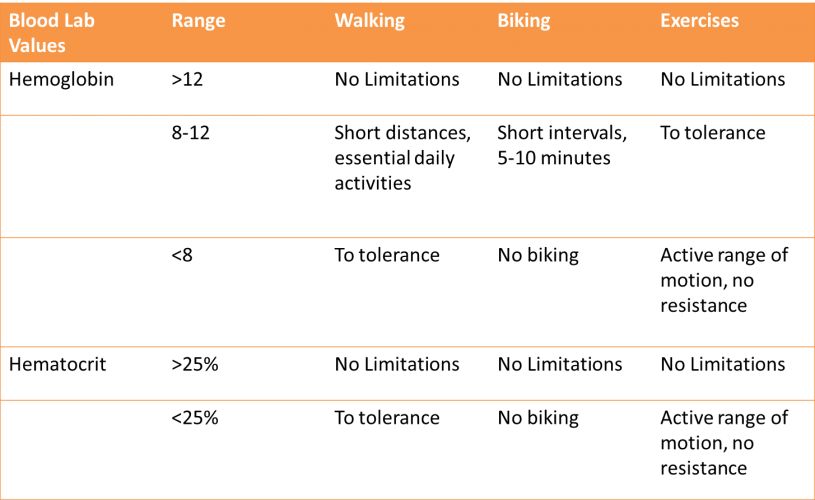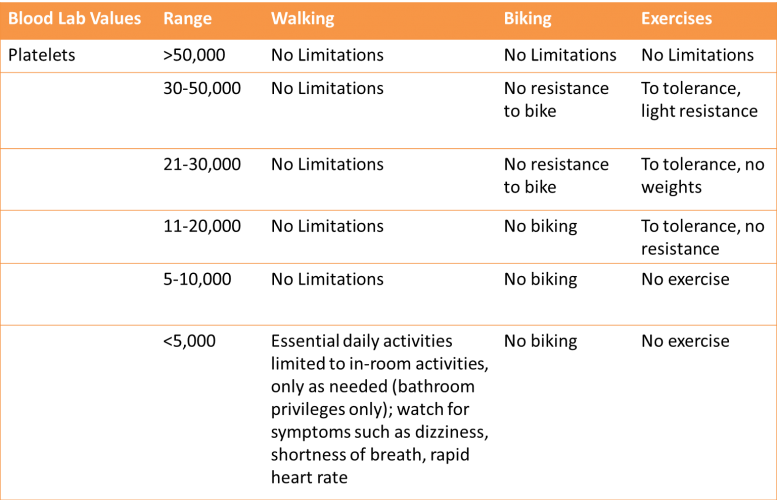Regular exercise both before and after your stem cell transplant will prevent you from losing your strength and overall activity levels. Exercising effectively is significant in order to promote a sense of well-being and cope with cancer-related fatigue. However, before starting any new exercise routine, it is important to check with your doctor.

Note: It is very important that you know your latest blood cell counts (lab values) before exercising.
Your Platelet counts and hemoglobin (HEE-mo-glo-bin) levels, and hematocrit (hee-MAT-oh-crit) levels will determine your training routine.
Platelet Count vs. Exercise
Platelets are blood cells that help your blood to clot and prevent spontane-ous bleeding. If your platelet count is low (below 5,000), exercise may cause internal bleeding and so should be avoided. If your platelet count is above 10,000 but under 50,000, exercise is permitted, but should be limited.
Your Platelet count will determine your exercise routine and duration.

Watch for symptoms such as dizziness, leg cramping, shortness of breath, rapid heart rate.
Signs of Over-exertion
- Bleeding from your gums, mouth, nose, or ears, or in the whites of your eyes
- Easy bruising
- Blood in your urine, stool, or both
- Excessive menstrual bleeding
Once all your blood counts are getting back to normal you can do just about whatever you like.

Precautions to Prevent Bleeding:
- Avoid forceful blowing of your nose.
- Avoid holding your breath during exercise or while having a bowel movement.
- Be very aware of your surroundings to avoid falls, cuts, or bumping into objects.
- Do not lift weights; do not carry or move heavy objects.
- If you feel weak or unsteady, use appropriate support (for example, a walker or cane), and do not get out of bed without someone to help you.
Hematocrit & hemoglobin levels vs. Exercise
If your hemoglobin or hematocrit levels are too low, your body will lack enough oxygen to meet the increased demand required for exercise. It is important to check your most recent hemoglobin and hematocrit levels before you exercise.
Follow the guidelines below for hemoglobin and hematocrit lab values when you choose an exercise or other activity.

Monitor for signs of bleeding or bruising.
Signs of Overexertion:
- Fatigue
- Shortness of breath
- Leg cramping
- Exercise intolerance
- Light-headedness or dizziness
- Rapid heart rate
- Gait disturbance
- Tingling or numbness in arms or legs
Exercise is good for recovery but needs to be closely monitored in patients recovering from treatment.
Reference
Related Articles
Disclaimer
The Content is not intended to be a substitute for professional medical advice, diagnosis, or treatment. Always seek the advice of your physician or other qualified health provider with any questions you may have regarding a medical condition.